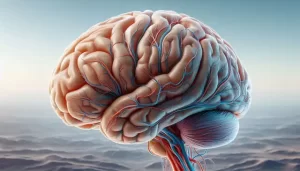University of Washington predicts that COVID-19 epidemic may rebound
- A Persistent Crisis: The Looming Specter of Drug Shortages in United States
- Rabies: The fatality rate nearly 100% once symptoms appear
- Human Brain Continues to Grow: Study Shows Increase in Size and Complexity
- CRISPR Genome Editing: From Molecular Principles to Therapeutic Applications
- Metformin Helps Immune System Better Recognize Cancer Cells
- Highlights of Prostate Cancer Research at the 2024 EAU Congress
University of Washington predicts that the COVID-19 epidemic may rebound
- Red Yeast Rice Scare Grips Japan: Over 114 Hospitalized and 5 Deaths
- Long COVID Brain Fog: Blood-Brain Barrier Damage and Persistent Inflammation
- FDA has mandated a top-level black box warning for all marketed CAR-T therapies
- Can people with high blood pressure eat peanuts?
- What is the difference between dopamine and dobutamine?
- How long can the patient live after heart stent surgery?
University of Washington predicts that the COVID-19 epidemic may rebound.
As soon as the epidemic has eased, consider relaxing the regulations on masks. The University of Washington predicts that the COVID-19 epidemic in the United States may rebound
According to the Associated Press report on the 26th, with the decline in the number of COVID-19 cases in the United States, some schools are considering relaxing the regulations on masks.
However, in the past few weeks, the number of COVID-19 deaths across the United States has been on the rise, some rural hospitals have shown signs of overload, and cold weather has begun to arrive.
As the use of masks in most parts of the United States decreases, the University of Washington‘s COVID-19 prediction model predicts that the number of infections and hospitalizations in the United States will increase in November.

Since the Delta epidemic peaked in mid-September, the number of new cases in the United States has been declining. The United States currently has an average of about 73,000 new cases per day, which is far lower than the 173,000 cases on September 13. Since the beginning of September, the number of Americans hospitalized with COVID-19 pneumonia has dropped by about half to about 47,000.
In Florida, if the decline in cases continues, Miami-Dade County’s mask requirements may be relaxed at the end of October, and nearby Broward County will discuss the relaxation requirements on the 26th. The Atlanta metropolitan area is also considering removing the requirement to wear masks in individual schools.
After reaching the state vaccination threshold, a high school outside of Boston became the first school in Massachusetts to list masks as an optional school. About 95% of eligible people at Hopkinton High School were vaccinated with the COVID-19 vaccine, and school leaders voted to allow students and staff who were vaccinated with the COVID-19 vaccine for a three-week trial period starting on November 1.
Although all this looks good, there are still some disturbing signs. As the cold weather begins, people will stay indoors more, and the new coronavirus is more likely to spread indoors. As the use of masks in most parts of the United States decreases, the influential COVID-19 model at the University of Washington predicts that the number of infections and hospitalizations will increase in November.
In addition, the daily number of COVID-19 deaths started to decline at the end of September and then slowly picked up. The death toll has risen from nearly 1,500 two weeks ago to approximately 1,700 per day.
At the same time, the COVID-19 virus is still hitting unvaccinated areas, many of which are rural areas in North Dakota, Wyoming, Alaska, and Minnesota. More than 67% of the U.S. population who meets the vaccination requirements have been fully vaccinated against the COVID-19, and the Biden administration is approaching the formulation of a mandatory vaccination order for all companies with more than 100 employees in the United States.
Alaska State Hospitals and Nursing Homes Association Chairman and CEO Jared Cosin said that in Alaska, the per capita case rate was ranked at or near the highest last month, and hospitals are still very tight. In Anchorage, Alaska’s largest city, the debate about whether to wear a mask has recently become more and more intense.
The sparsely populated state of Wyoming is one of the states with the lowest vaccination rate in the United States, with only 43%, which is only higher than that of West Virginia. But the state hospital currently receives more patients with COVID-19s than at any other time. According to the Casper Star Tribune, public health officer Dr. Mark Doyle told the county health department when talking about the situation at the Wyoming Medical Center: “It’s like a battlefield. The intensive care unit is already overcrowded.”
Dan Olsen, executive director of a small hospital in North Dakota, said that in his hospital, many people are receiving treatment for other diseases that have been delayed for a long time, but with the COVID-19 patients, the hospital’s facilities have reached the limit.
A rural man in Minnesota waited for two days to get a bed in the intensive care unit, but eventually died because he was not rescued in time.
University of Washington predicts that the COVID-19 epidemic may rebound
(source:internet, reference only)
Disclaimer of medicaltrend.org
Important Note: The information provided is for informational purposes only and should not be considered as medical advice.



